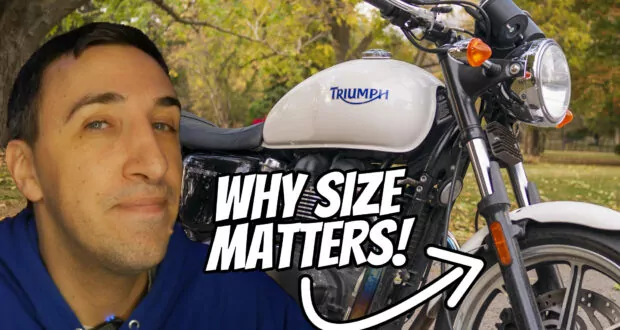In this article and video we’re exploring why a budget Bonneville from 15 years ago out-handles it’s more expensive Bonneville siblings, and maybe its competition too.
This is the 6th installment in my series comparing my Triumph Bonneville 865, my Moto Guzzi V7 750, and my Royal Enfield Interceptor 650. We’ll be looking at:
- The difference in Bonneville sub-models, so you know what to look for
- The science behind why those differences matter on the road
- How my Bonneville handles in comparison with my Royal Enfield and my Moto Guzzi
I’m Adrian from YouMotorcycle, and I’ve owned four Bonnevilles in almost 20 years of riding. Nowadays you can buy a used 2009-2016 Bonneville for cheaper than ever, but you do that, you should know this:


DIFFERENT BONNEVILLES – Which one’s best?
Triumph Bonnevilles come in so many shapes and sizes. You have your variations, like the Scrambler, and the Thruxton, and then within the Bonneville name you have your sub-models, like the Bonneville T100, the Newchurch, the Bonneville SE, and the Bonneville Black (a.k.a. the base model Bonneville).
No motorcycle is perfect, not even a Bonneville. Which one do you get?
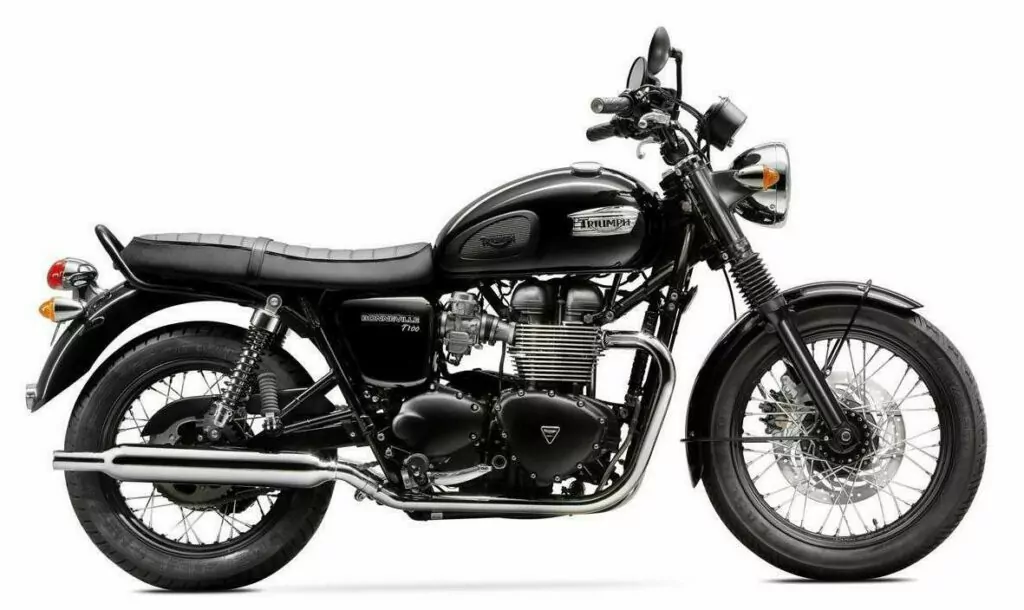
The “classic Bonneville” that most of us imagine when we close our eyes probably has a big spoked 19” front wheel. Most people don’t realize that Triumph has often also offered the Bonneville with a smaller, 17” front mag wheel option, dating as far back as 1978.
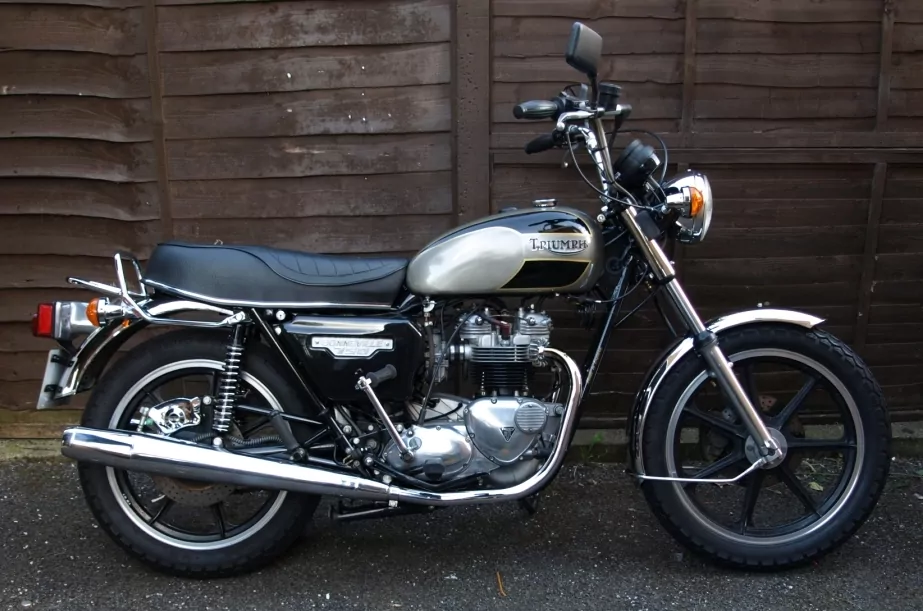
For decades now, motorcycle journalists have advised us that if you value performance over looks, the smaller 17” mag wheel Bonnevilles are the best ones – despite the fact that the 19” spoked wheel models are more popular. One journalist even went as far as to say that the larger spoked wheel will “ruin what’s otherwise a great bike, removing both outright handling ability and feel by increasing unsprung weight and making steering geometry more conservative.” (Source: VisorDown)
Let’s look at what motorcycle journalists have been trying to tell us, if 17” mag wheels really are that much better than 19” spoked wheels, and the physics behind why just a couple inches can make a big deal on any motorcycle.
THE SCIENCE IN SUPPORT OF SMALLER – How does it work?
This section will be divided in three parts. The first part will cover wheel and tire size differences. The second part will cover differences in steering geometry. The third part will briefly touch on various other benefits of the 17″ mag wheel model over the 19″ spoke wheel model.
Bonneville wheel and tire differences
You might wonder, can the average rider really feel a 2” difference between the 19” spoked wheel, and the 17” mag wheel? Yes, absolutely!
Believe it or not, it’s actually a 3″ difference. Both the 17″ mag wheel, and the 19″ wheel will need tires put on them, but the tires going on each wheel differ in size. When mounted, the tire for the spoked wheel measures 26.1″ in diameter, and the tire for mag wheel measures 23.1″ in diameter. Even a fairly inexperienced rider will notice a 3″ difference in front tires sizes.
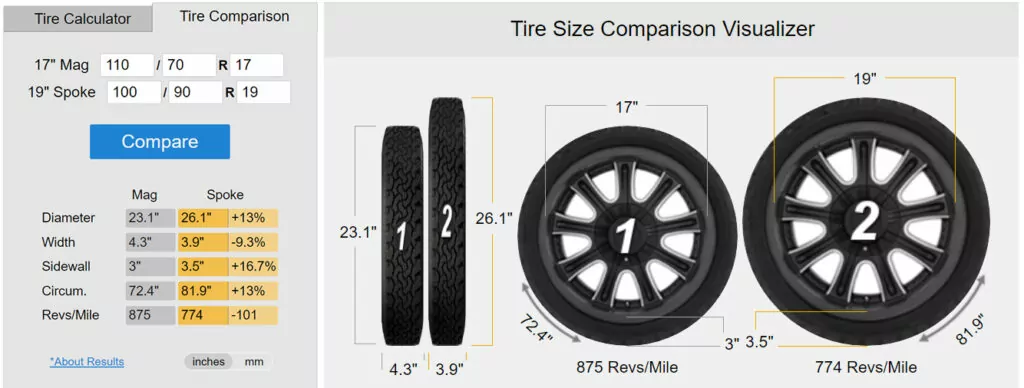
It’s not a question of will you feel the difference. It’s a question of how will each feel differently, and which one will feel best?
The smaller diameter of the mag wheel Bonneville gives it quicker steering response. That means less effort to turn the handles, sharper control, and a more agile and nimble feeling from a 17″ mag wheel Bonneville over a 19″ spoked wheel Bonneville.
The mag wheel’s tire also gives it a lower profile which on motorcycles typically also gives better responsiveness and stability in corners. The lower profile tire also gives a larger contact patch when you’re leaning your Bonneville through a corner, which enhances your grip and handling.
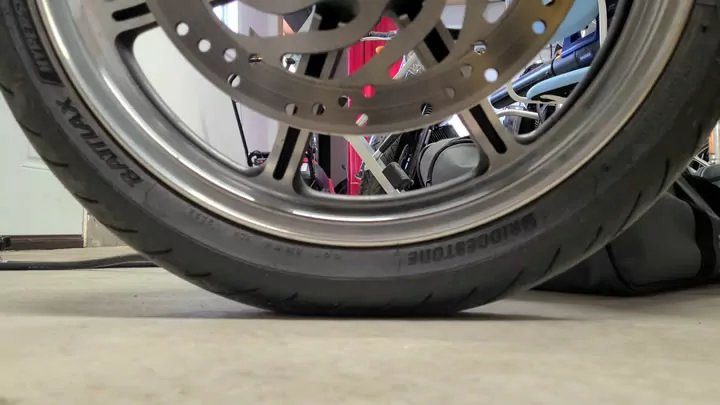
Bonneville steering geometry differences
It’s clear that the differences in tire and wheel sizes have a significant impact on a Bonneville’s handling. However, Triumph decided to take it one step further, and engineer other differences between the 17″ mag wheel Bonnevilles and the 19″ spoked wheel Bonnevilles as well.
Let’s look at the steering geometry. The rake angle of the 17″ mag wheel Bonneville is about 2 degrees less than the 19″ spoked wheel Bonneville. This translates into mag wheel Bonneville having ¼ inch less less trail than the spoked wheel Bonneville.
This is getting way too technical, let’s keep this simple:
The changes Triumph made to the steering geometry mean a 17″ mag wheel Bonneville will have better responsiveness, will need less effort in turns, will have easier low speed handling, and a more “flickable” feeling for the rider.
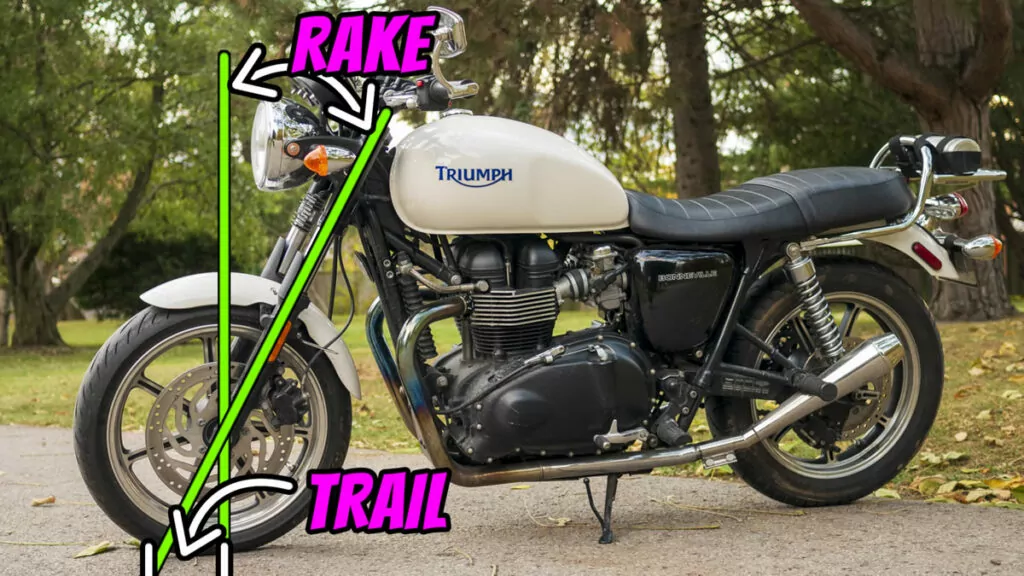
If it sounds like a lot of repetition, it is. The mag wheel Bonnevilles gain several of the same benefits twice over.
Other benefits of the 17″ mag wheel
Because 17” wheels are so common in motorcycling, you really have your choice of so many awesome tires. Furthermore, the stock size for the mag wheel Bonneville is 110/70-17, which is a common size. However, 120/70-17 is a size worn by a majority of sport oriented motorcycles, is one of the most common tire sizes in motorcycling, and can be put on a mag wheel Bonneville. The mag wheel Bonneville benefits not only from a wide variety of tire options, but also a substantial amount of sport-oriented tires as well.
This isn’t to say that finding tires for the 19″ spoked wheel Bonneville is hard, or that options or lacking. It’s simply to point out that the 17″ mag wheel Bonneville is spoiled for choice in tires in comparison.
If you find yourself wondering, “If the smaller wheel is so much better, why doesn’t Triumph just standardize a smaller wheel then?” Well, they have!
As of 2016, Bonnevilles no longer come with the option of 17″ mag wheel or 19″ spoked wheel. Instead Triumph made a compromise, got rid of both of those options, and standardized a 18″ spoked wheel. It was designed to give the good looks of the spoked wheel most Bonneville fans prefer, while giving some of the benefit of the smaller wheel loved by the mag wheel Bonneville fans.
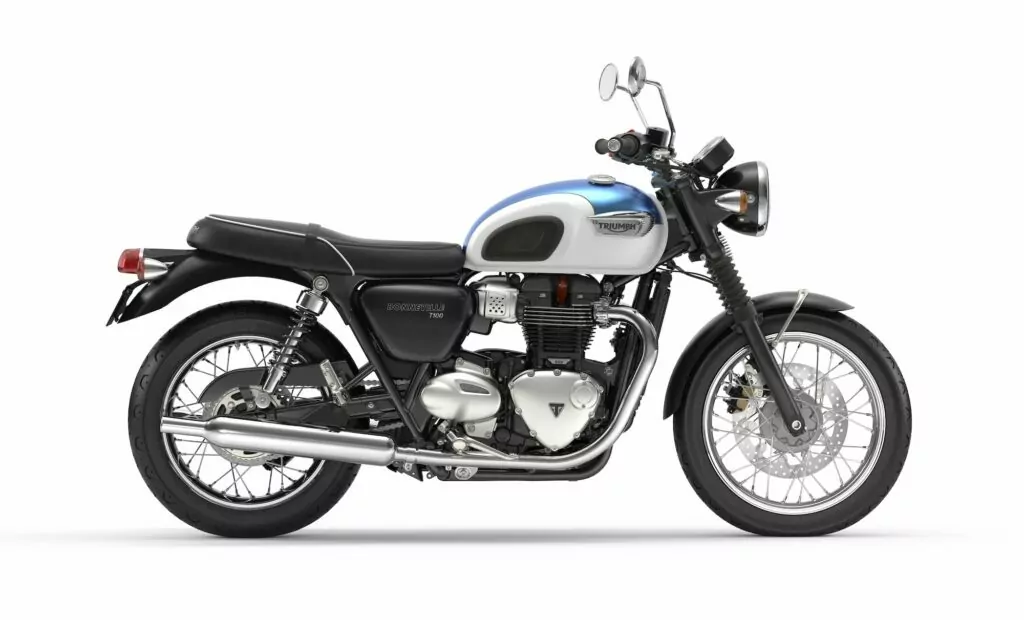
Triumph’s 18″ wheel does manage to give a little to both sides, however, a compromise is just an agreement where neither side is fully satisfied, so many may still prefer either the old 19″ spoked wheel or the 17″ mag wheel options.
COMPARISONS TO THE V7 750 AND INTERCEPTOR 650 – Which handles best?
Ok, enough Triumph on Triumph comparison, let’s see how my mag wheel Bonneville compares to the my Moto Guzzi V7 750 and my Royal Enfield Interceptor 650.
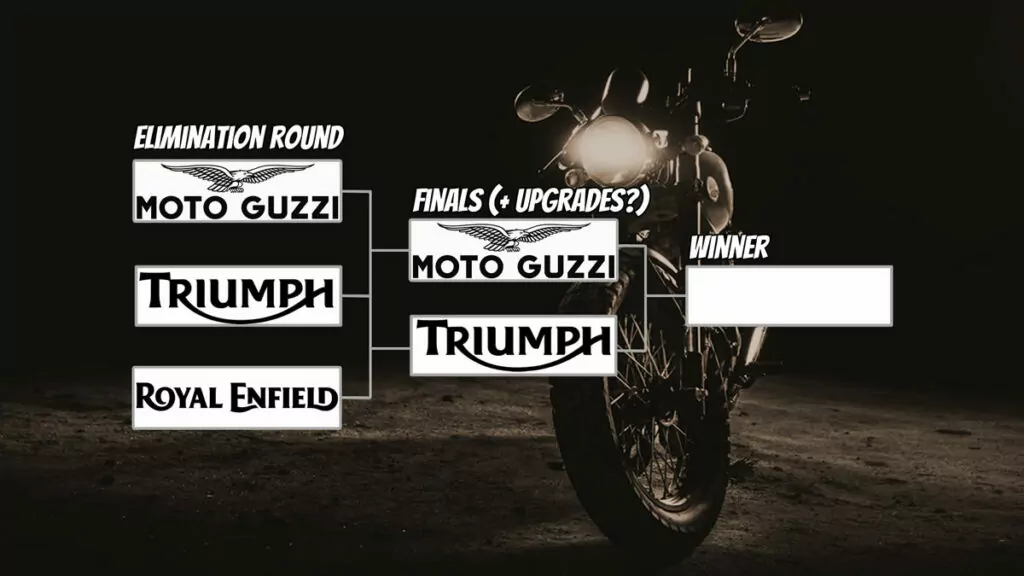
Compared to the Interceptor, my mag wheel Bonneville has a 2” smaller diameter tires which help the Bonneville feel more flickable. However, the Interceptor’s suspension isn’t bad, whereas the Bonneville’s suspension can be scary if you’re faced with bumps in the road at high speeds. Which of these two motorcycles handles better might just come down to how smooth the pavement is that you’re riding on, and how fast you’re riding on it.
Note: If you want to know more about the Interceptor, you should check out Episodes 2 and 5 of my series, where I go into detail on my Royal Enfield. I’ll link to them in a pinned comment below this video.
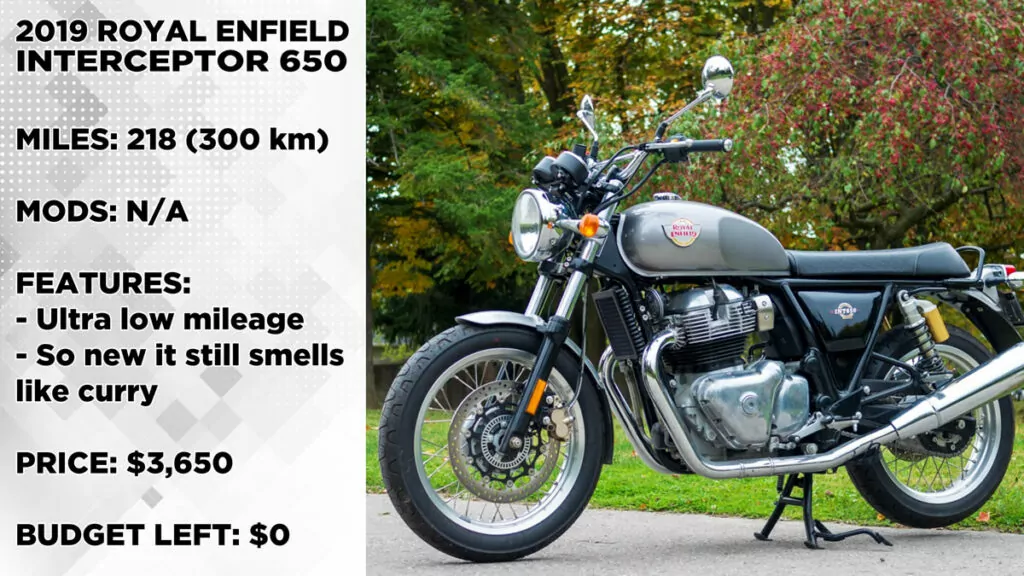
As for my V7, the Moto Guzzi is a bit of Goldilocks middle-ground of the three motorcycles. It uses the same 100/90-18 front tire size as the Interceptor, and has virtually the same steering geometry as the mag wheel Bonneville.
What sets the V7 apart, is it’s light weight. My Moto Guzzi V7 weighs over 60 lbs less than my mag wheel Bonneville and it has a low center of gravity.
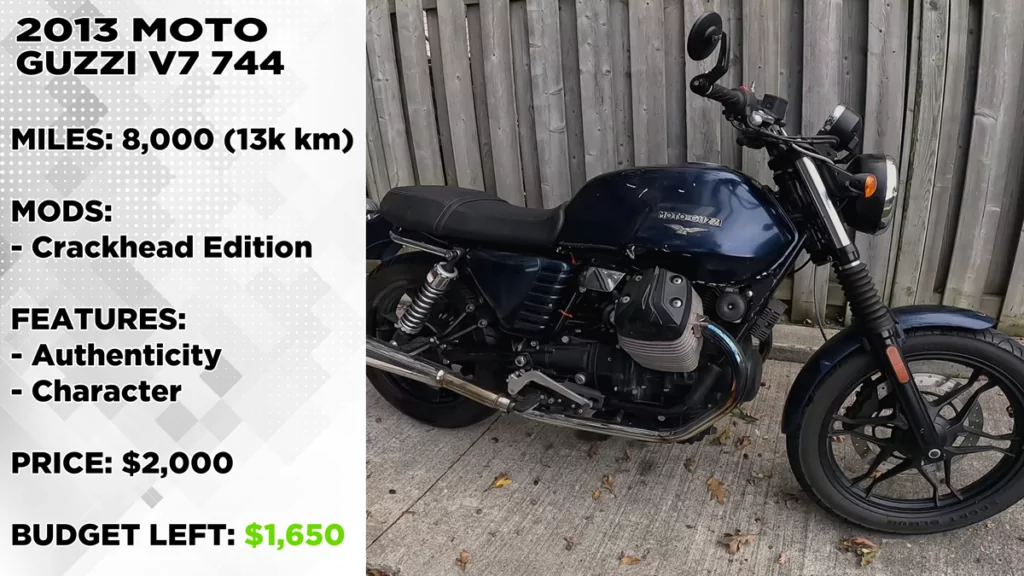
I admit, I haven’t been able to ride the V7 very much due to all of the repair and maintenance work it’s been getting done. However, from my early impressions, I would say the V7 handles just as well, or possibly even better, than my mag wheel Bonneville does. It feels like a lighter motorcycle.
CONCLUSIONS – Which should you buy?
Here’s the full quote from the story I referenced at the beginning of this article:
Now, the SE model isn’t the only bike in the Bonneville range. But, along with the base model, it is the best. Why? The T100 swaps in a 19-inch, spoked front wheel, tubes, two-tone paint, a flat seat, more conservative suspension geometry and higher, narrower, more swept back handlebars for a $1,400 premium over the standard Bonneville.
Worth it? Nope. Those mods effectively ruin what’s otherwise a great bike, removing both outright handling ability and feel by increasing unsprung weight and making steering geometry more conservative. Save that cash and buy the base model…”
Source: VisorDown
As the previous owner of both 17″ mag wheel and 19″ spoked wheel Bonnevilles, would I go as far as saying that spoked wheel “ruins” a great motorcycle? No. There is space for the 19″ spoked wheel Bonneville in motorcycling, and it will be a fine bike for those who ride in straight lines on sunny days. The takeaway from all of this shouldn’t be that spoked wheels ruin motorcycles, but rather than the difference between the mag wheel and spoked wheel Bonnevilles are so extreme that they deserve careful consideration before you buy.
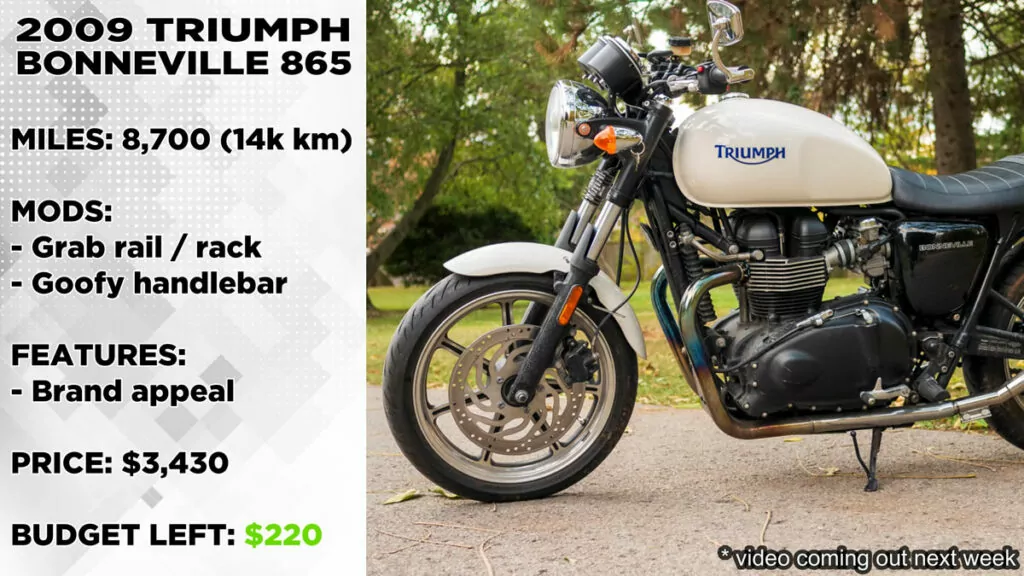
There’s so much more we could talk about on this subject. We could talk about the mag wheels using tubeless tires which makes them easy to plug on the side of the road. We could talk about how the spoked wheels will be heavier and the effects of a wheel’s unsprung weight.
I could go on and on but I would rather open the discussion up to you guys. What do you think? I know the spokes probably look better to most people. Would you sacrifice looks a little bit, if it meant much better handling? I’d love to hear what you have to say. Please leave me a comment down below or on YouTube.
I’m Adrian from YouMotorcycle. Ride safe, but have fun!
 YouMotorcycle Motorcycle Blog – Motorcycle Lifestyle Blog, MotoVlog, Motorcycle Reviews, News, & How-Tos
YouMotorcycle Motorcycle Blog – Motorcycle Lifestyle Blog, MotoVlog, Motorcycle Reviews, News, & How-Tos
